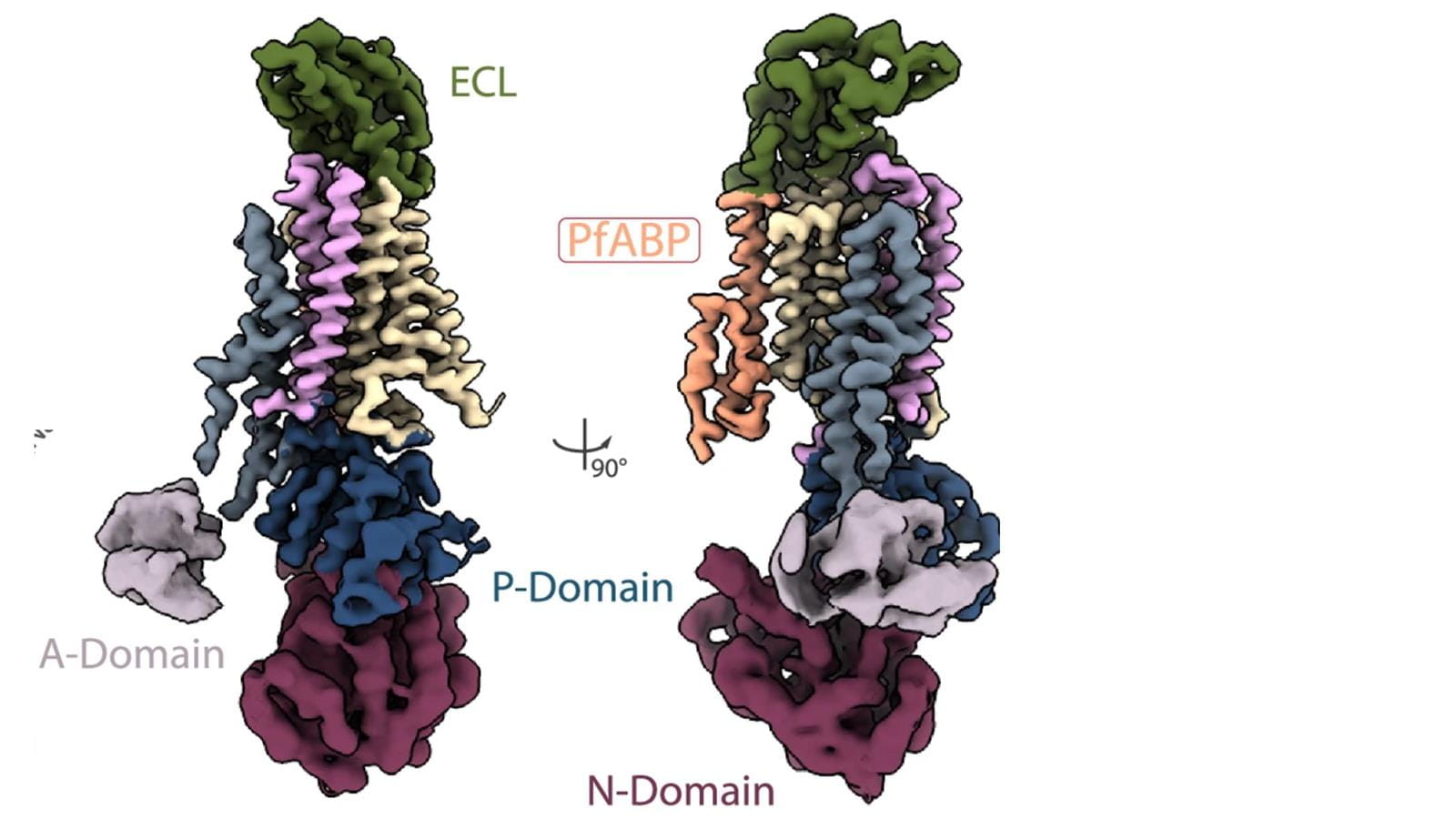Drexel Researchers Gain New Insights from Malaria-Causing Parasite That May Support Development of Future Antimalarial Drugs

- How and When Could AI Be Used in Emergency Medicine?
- Faculty Highlights: Recent Awards and Grants
- Drexel Receives $1.4 Million Grant to Establish Hub for Literacy Reform
- Drexel Public Health Researchers Lead $3.7 Million Study Looking at Impact of Federal Housing Assistance on Health Care for Chronic Conditions

Scientists from Drexel University’s College of Medicine and Columbia University’s Irving Medical Center have uncovered a crucial structural feature of a key malaria drug target, known as PfATP4, and discovered a previously unknown binding partner that could reshape antimalarial drug design.
The team revealed a three-dimensional structure of a malaria parasite’s sodium pump, known as P. falciparum P-type ATPase, or PfATP4. Found on the plasma membrane of a malaria-causing parasite, the pump pushes sodium out of a parasite’s cytoplasm to help the parasite survive. The findings were published today in Nature Communications.
Malaria, often caused by a species of parasite known as Plasmodium falciparum, continues to kill more than 600,000 people globally annually, as rising drug resistance undermines decades of progress against the mosquito-borne infectious disease. Several clinical candidates, including the experimental drug Cipargamin, directly inhibit PfATP4 — but mutations causing resistance to the drug have readily emerged.
Using cryogenic electron microscopy, which projects an electron beam through a frozen sample, the researchers visualized PfATP4 purified directly from parasites grown in human red blood cells. This high-resolution structure revealed the precise organization of PfATP4’s ATP- and sodium-binding sites, allowing scientists to map where resistance mutations occur.
During the study, the team identified an entirely new protein, which they named PfATP4 Binding Protein (PfABP). PfABP tightly associates with PfATP4, is essential for parasite survival and appears to stabilize and regulate PfATP4’s function. The researchers’ experiments showed that loss of PfABP led to the rapid degradation of PfATP4 and death of the parasite.
"The discovery of ABP was possible because we isolated the pump directly from malaria parasites,” said co-lead author Anurag Shukla, PhD, a research instructor at Drexel. “This required hundreds of liters of growth medium with the parasites growing in human red blood cells.”
Looking at structural comparisons with related enzymes called P-type ATPases, the authors suggest that PfABP functions much like regulatory subunits in human ion pumps — pointing to a new class of drugs against pathogens. Because PfABP is largely unchanged across malaria parasites but absent from humans, it offers a unique therapeutic opportunity with potentially less risk of long-term harmful side effects, the authors suggested.
“This discovery changes the way we think about PfATP4 as a drug target,” said Akhil Vaidya, co-senior author and professor at Drexel’s College of Medicine and also a co-inventor of an anti-malaria agent. “PfABP not only stabilizes the pump but likely modulates its activity. Targeting this interaction may provide a more durable therapeutic strategy against malaria.”
The findings may provide a blueprint for next-generation drug discovery, the authors argued, offering ways to design molecules that target not only PfATP4, but also its essential partner PfABP.
“Every year, malaria parasites adapt to outsmart our medicines,” said Chi-Min Ho, PhD, co-senior author and assistant professor at Columbia. “By revealing this hidden partnership within the parasite’s sodium pump, we have uncovered a vulnerability that can be exploited for new therapies.”
The paper “Endogenous structure of antimalarial target PfATP4 reveals an apicomplexan-specific P-1 type ATPase modulator” is available online here.
In addition to Vaidya, Shukla and Ho, additional authors include co-lead author Meseret Haile, a doctoral student at Columbia; Michael W. Mather, PhD; Suyash Bhatnagar, PhD and Joanne M. Morrisey, from Drexel and James Zhen, PhD, and Zhening Zhang, PhD, from Columbia.This research was supported by funding from the National Institutes of Health (DP5OD029613, R01AI132508 and R01AI154499).
In This Article
Contact
Drexel News is produced by
University Marketing and Communications.